Varygs and Rus "Tale of Bygone Years"
It should be said that from the end of the 8th to the middle of the 11th centuries, the pagan and economically backward Scandinavia managed to exert a tremendous influence on the development and course of history in the countries of Western and Eastern Europe. Scandinavian warships, like ghosts, appeared on the coasts, but could pass along rivers and into the interior of the country - Paris, far from the sea, for example, was ransacked four times by the Danes. The Catholic cathedral in Metz 1 in May 888 decided to include in official prayers the words "that were not required to be written on parchment; wherever the Vikings came at least once, they were forever imprinted on the tables of people's hearts" (Gwin Jones): "God save me us from the fury of the Normans. "
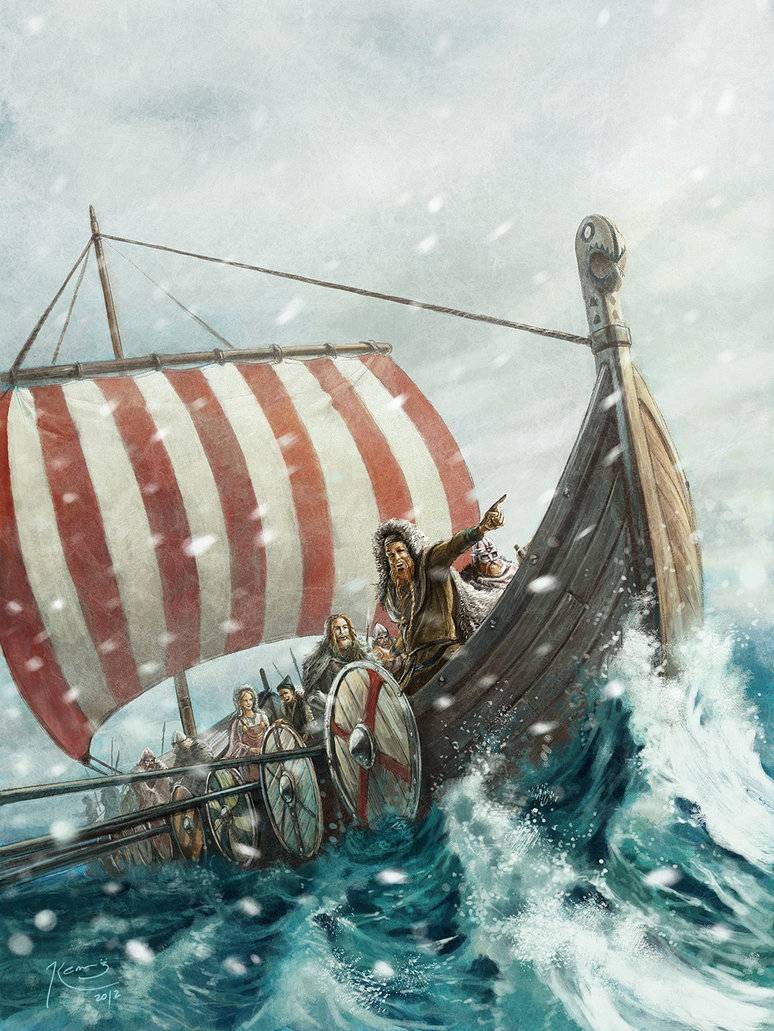
In Western Europe, militant newcomers were called Normans ("northern people"), in Russia - Varangians (perhaps from the Norse varing - "squad", or from varar - "oath"; or from West Slavic - varang - "sword"), in Byzantium - Verings (probably from the same root as the Vikings).
Interestingly, the Swedish scientist A. Stringolm considered the words "Varangian" and "Guard" to be one-root:
Regardless of the nationality of the Scandinavian warriors marching on a campaign, they were called the Vikings (most likely from the Old Norse vic - “bay”, but perhaps from vig - “war”).
The North-Western Russian lands, open from the Baltic Sea to the Scandinavian invasions, also experienced all the “charms” of their geographical position. Slovenia (of which Novgorod was the main city) and allied or vassal Finno-Ugric tribes to them more than once were subjected to raids by the Normans. Historians believe that the last time Novgorod was captured by the Normans at the end of the IX century. As a result of the uprising of the townspeople, they were expelled from the city, however, if you believe the information given in the "Tale of Bygone Years", the situation in the land was at that time extremely tense. Taking advantage of the weakening of Novgorod, the tribes, previously subject to him, refused to pay tribute, in the city itself the citizens who lost their property attacked the homes of wealthy merchants, they hired guards, and sometimes there were real battles. Tired of the strife, city residents decided to call on the ruler from the side who could, firstly, become a disinterested arbiter in their disputes and, secondly, lead the national militia in the event of a resumption of hostilities.
To which of the neighbors could contact Novgorod? The Tale of Bygone Years directly calls the Varangian tribe Rus. And this only evidence has become literally a curse of Russian history. “The Tale of Bygone Years” our “patriots” –the Antinormanists do not trust to the end, but they do not dare to declare it an unreliable source and deduce from historical circulation. It would seem that it has long been proved that the role of the prince in Novgorod of those times was reduced to military leadership and arbitration. So, whoever Rurik is of origin, it’s completely wrong to speak about his authoritarian rule and decisive influence on the formation of Russian statehood. Recognition of this fact should have long eased the urgency of the discussion. In fact, neither German origin of Catherine II, nor her complete absence of rights to the Russian throne, perturb us. However, the Norman problem has long gone beyond rationality and is a problem not so much historical as psychopathological.
By the way, in 2002, an interesting study was conducted. The fact is that the original Y chromosome is transmitted by hundreds and thousands of generations unchanged, and only through the male line. DNA analysis showed that people who are considered descendants of Rurik belong to two completely different branches of population markers, that is, they are descendants of two different ancestors along the male line. Vladimir Monomakh, for example, has a Scandinavian genetic marker N, and his uncle Sviatoslav has a Slavic R1a. This can serve as confirmation of the well-known assumption that the continuity of the dynasty of Rurikovich and the family ties known to us from textbooks, most likely, is a historical myth. But we digress.
When reading Scandinavian sources, an unexpected fact is striking: the sagas are not aware of the vocation of the Normans in Novgorod. They know about the Baptism of Russia even in distant Iceland, but they don’t even suspect about such a significant event, even in neighboring Sweden. You can still try to find candidates for the role of Rurik and Oleg (at the level of guesswork and assumptions), but later Igor and Svyatoslav who ruled later are completely unknown to the Scandinavians. The first Russian prince, who can be identified with full confidence in the sagas - Vladimir Svyatoslavich, and for the Scandinavians, he was not "his". And his name has no Scandinavian counterpart. If we assume that Vladimir is still a direct descendant of the first Norman king, called up to Novgorod, then it must be admitted that by this time the Scandinavians in Russia had finally assimilated and slandered. There is nothing surprising in this: in Normandy, the descendants of Hrolv and his warriors, too, were French, and after a generation, they even forgot their own language - in order to teach the grandson the "northern dialect" Khrolvu had to invite a teacher from Scandinavia. But during the reign of Yaroslav the Wise, Scandinavians again come to Russia in large numbers - now as “condottier”, offering their services to anyone who can pay for their willingness to fight and die. And some Russian princes even have second names - Scandinavian names. The son of Yaroslav the Wise, Vsevolod, is known in Scandinavia as Holti (this name was probably given to him by his mother, the Swedish princess Ingigerd). And the son of Vladimir Monomakh, Mstislav, the Scandinavians know how Harald (probably, the "anglianki" Gita named him in honor of her father - Harold Godwinson).

It is noteworthy that the Scandinavians themselves did not know any Rus and no "Ros people": they called themselves Sveons, Danes, Normans (Norwegians: Norway - "Country Along the Northern Path"), and the Russian lands - with the word "Gardariki" ("Country of Cities" ). The Slavs also did not call themselves Russes at that time: there lived a glade in Kiev, Krivichi lived in Kiev, Smolensk, Polotsk and Pskov, Slovenia in Novgorod, etc. Only at the beginning of the XII century, the author of the Tale of Bygone Years identifies the fields with the Rus: “the clearing, even the invincible Russia.” At the same time, he reports that the Novgorodians, who were formerly Slavs, were “conjured up”:
So, most likely, there were no “vocations” of the Vikings from Scandinavia, but there are no doubts about the presence of people of Scandinavian origin on the territory of Ancient Russia, and even there are “Rus” somewhere there.
In the Berta annals, for example, it is reported that in 839 the embassy of the Byzantine emperor Theophilus arrived at the court of the Frankish emperor Louis the Pious, and with him the people "who said that their people were growing up (Rhos) and who, as they said, , their king, named Hakan (Scandinavian name Hakon? Turkic title Hagan?), sent to him (Theophilus) for the sake of friendship "(Prudentius). Acquainted with the ambassadors of the "people of the Ros" closer, the Franks came to the conclusion that they are sveonami.
In 860, according to Greek and Western European sources, the army of the “people of Ros” made a campaign against Constantinople.
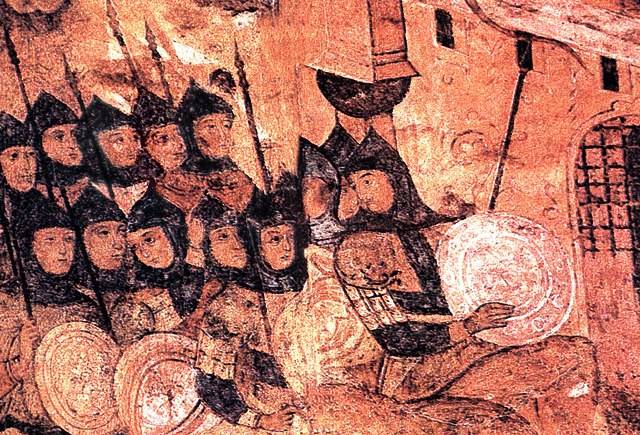
Patriarch Photius in the "Circular Message" to eastern archbishops wrote that the Russians had left the "northern country", living far from the Greeks, behind many countries, navigable rivers, and the seas devoid of shelter. Religious tradition connects this campaign with the so-called miracle of immersion in the sea of the cover of the Most Holy Theotokos - supposedly after this a storm arose, which sank the enemy fleet. However, the contemporaries of this miracle is not known - everyone is sure of the defeat of the Byzantines. Pope Nicholas I reproached Michael III for the fact that the newcomers left unforgiven, and Patriarch Photius, who was at the time of military operations in Constantinople, argued that "the city was not taken by their (Rossi) grace." He also spoke about Ross in his sermon: "The people of no name, not considered for anything, unknown, but received a name from the time of the campaign against us ... reached brilliant heights and incalculable wealth - oh, what a disaster sent to us from God" . ("Two Conversations of the Most Holy Patriarch of Constantinople Photius on the Occasion of the Ross Invasion"). Venetian Doge Chaplain John Deacon (XI century) claims that during the reign of Michael III, the Normans attacked Constantinople, who, coming on the 360 ships, "fought the neighborhood of the city, ruthlessly killed many people and returned home in triumph."
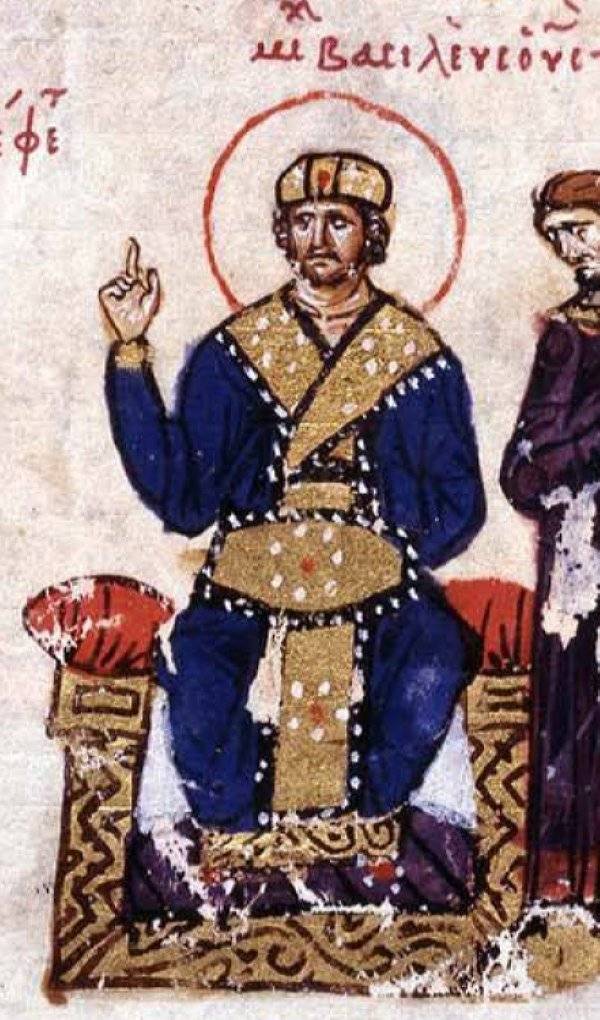
Chronicler of the tenth century Liutpraund Cremona is no less categorical: "The Greeks call the Russos the people whom we call Nordmannos according to their place of residence." "The people of Ros" he placed next to the Pechenegs and the Khazars.
In The Rhymed Chronicle of the Dukes of Norman, written around 1175 by the poet Benoit de Saint-More, it says:
there is an island called Scansi
and I believe that this is the land of Russia.
Like bee hives,
They take off in huge mighty swarms
from thousands and thousands of fierce fighters,
and rush into battle, drawing their swords,
inflamed with anger
as one for all and all for one.
This great nation
can attack big countries
and give fierce battles
and win glorious victories.
Bishop Adalbert calls the famous princess Olga, who ruled the land of the field, the queen not of the Slavs, but of the Rus. At the same time, Adalbert reports that the Ruses are a people whose western part perished in Norik (a Roman province on the right bank of the Upper Danube) and in Italy in the 5th century. By the way, on the territory of Ukraine (under the Covel), archaeologists discovered one of the most ancient Scandinavian runic inscriptions known to science - on the tip of a spear, it dates back to the 3rd-4th centuries AD.
A number of historians believe that the ethnonyms and the names of the Russians indicate their German-speaking. Proof of this, in their opinion, can serve as the fact that the names of the Dnieper rapids in the essay "On Government Management" of the Byzantine Emperor Constantine Bagryanonnogo (X century) are given "in Russian" (Essupy, Ulvoren, Gelandri, Eyfar, Varuforos, Leanty, Struvun) and "in Slavonic" (Ostrov ¬ niprah, Unclear, Wulniprah, Veruci, Naprezi).
Two thresholds, Gelandri and Varuforos, which MP In the XIX century, Pogodin called "two pillars that will always support Normans and withstand any kind of ax". His opponent N.A. Dobrolyubov responded to this statement with the ironic poem "Two Pillars":
They put my theory on fate.
Thresholds this name so Leberg explained
From the language of Norman, that there is no force to argue.
Of course, the Greek author could have misinterpreted them,
But he could, against custom, and correctly write.
. . . . . . . . . . . . . . . . . . . . . . . . . . . . . . . . . . . . . .
Gelandri and Varuforos are bulls, so to speak,
Oh koby you beat in vain fists.
In fact, at the present time we managed to translate the names of all the thresholds into the modern Russian language. But, in order to save time, I will give the translation of the names of only two thresholds, referred to in this poem: Gelandri (giallandi) - "Noise Poro"; Varuforos - baruforos ("strong wave") or varuforos ("high rock"). Another threshold (Eifors - "Eternally furious", "Ever rustling") is interesting because its name is present in the runic inscription on the Pilgard stone (Gotland).
Eastern sources also report the differences between the Slavs and the Rus: the Arabs called the Slavs the word "Sakaliba", while the Russians have always been Russians and stand apart, being dangerous opponents for the Khazars, Arabs, and Slavs. In the VII century. Bal'ami reports that in 643 the ruler of Derbent Shahriyar said during negotiations with the Arabs:
Khazar king Joseph in the middle of the tenth century. He wrote to his Spanish correspondent Hasdai ibn Shafrut:
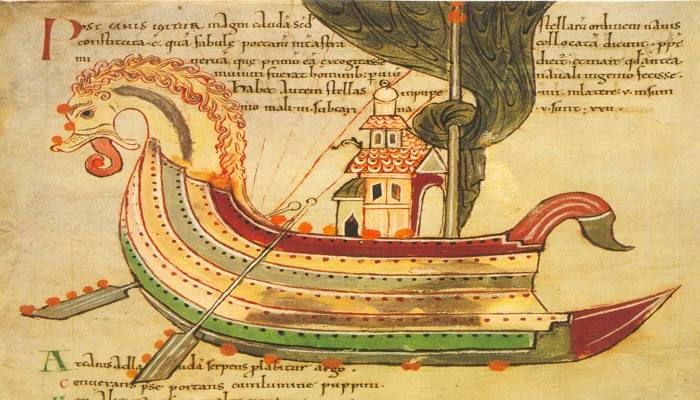
The tenth-century Persian scholar Ibn Ruste unequivocally points out the difference between Rus and Slavs: "The Rus make raids on the Slavs: approach them in boats, disembark them and take them captive, take them to Bulgaria and Khazaria and sell them there. They don’t have them, and they feed on the fact that they are brought from the land of the Slavs ... Their only business is trade in furs. They dress untidy, the men wear golden bracelets. Slaves are treated well. They have many cities and live in the open. They are tall, prominent and courageous, but they show that courage not horse - all their raids and campaigns they make on the ships. "
The information given in this passage characterizes the Rus as typical Vikings. Al-Marwazi, the author of the end of the 9th century, writes about the fact that the Ruses prefer to fight on ships:
In 922, the envoy of the Baghdad Caliph Ibn-Fadlan visited Volga Bulgaria.
On the Volga, he met the Rus and described their constitution, clothing, weapons, customs, customs and religious rites in some detail. Moreover, "throughout the description of the Rus on the Volga, reported to us by Ibn-Fadlan ... we meet the Normans in the image of them by the French and the British of the same time ... the Arabs from the east seem to give a hand to these writers" (Frenn).
Semiradsky G. "The Funeral of the Noble Rus"
It is also indicated that there were differences between Russians and Slavs at the household level: the Ruses washed their heads in the general basin, shaved their heads, leaving a shred of hair on the crown, lived in military settlements and “fed” on military booty. The Slavs, on the other hand, washed themselves under running water, cut their hair in a circle, engaged in farming and cattle breeding. By the way, Olga's son - Prince Svyatoslav, judging by the Byzantine descriptions, was precisely the Rus:
The author of the Arab source “Hudud al Alem” (“Limits of the World”), who reports that some residents of the first city in the east of the country of the Slavs are similar to the Rus, also knows that Russes and Slavs belong to different nations.
So, some people of Scandinavian origin, constantly lived in the neighborhood of the Slavic tribes. Since they are nowhere called Normans, or Swedes, or Danes, and they didn’t call themselves that, it can be assumed that they were settlers from different Scandinavian countries, united only by a common for all "northern" language, a uniform way of life and temporary common interests.
They could call themselves rodsmen (sailors, oarsmen), the Finns called them ruotsi (“people or warriors in boats” - in modern Finnish they call this word Sweden, and Russia - Venaja), Slavic tribes - Rus. That is, "Rus" in the "Tale of Bygone Years" is not the name of a tribe, but a clarification of the occupation of the Varangians. Probably, the prince's warriors were originally called the Rus (with whom the Byzantines, the Finns, the Slavs, and other nations were forced to “get to know” - regardless of their nationality. Norwegians, Swedes, Estonians, glades, Drevlyans, Krivichi, and even if they were Biarma - after joining the squad, they all became Rus. And from that moment on, the interests of the squad for them were above the interests of the tribe. And very many people wanted to enter the prestigious and highly paid princely military service. The story with the spoons of Prince Vladimir has already become boring for everyone, and has "filled the teeth with teeth". But this is what the author of the Rotten Skin manuscript tells about the orders at the court of his son Jaroslaw: a warrior brings Magnus (the future king of Norway) to the room where Yaroslav sleeps and throws him on the prince’s bed with the words: "Better keep your fools at another time" . And Yaroslav, instead of letting him in the neck, order to carve at the stable or at least fine him in the amount of a monthly salary, meekly replies: "Often you choose obscene words for him" (however, it was difficult to do without "obscene words" , in the next article I will talk about what happened, but Yaroslav doesn’t know about it yet. Readers who know what's the matter, I beg you not to comment, wait a few days to keep the intrigue). As we can see, the status of professional warriors in those years was so high that they would gladly agree to call and consider themselves even Huns, even Sarmatians, even Nibelungs. But, according to the old memory and traditions of the first princely warriors, they were called Russes. In the future, this name was transferred to the entire population of the country.
Where did the Varangians were come to Novgorod from? B. Bogoyavlensky and K. Mitrofanov in their work "The Normans in Russia before Vladimir the Saint" came to the conclusion that the "Ruses" referred to in The Tale of Bygone Years were people of Scandinavian origin who lived in the area of Old Ladoga (Aldeygyuborg - Old city). The aforementioned authors suggest that Ladoga played the role of a hub for floating and traveling Scandinavians, an international trade center. According to Swedish sources, this city was founded in 753. Tradition connects its foundation with the god Odin, but, in fact, of course, the people from Uppsala built Aldeygyuborg. It lived in it, the Swedes kolbyagi (culling or kolfingi - "spearmen"), which were soon joined by the Norwegians and given, and in the surrounding villages - the Finns. The presence of Scandinavians in Ladoga is confirmed by numerous finds of runic records dating back to the beginning of the 9th century. We also add that, according to the latest archaeological research, on the White Lake and the Upper Volga, the Normans appeared a century before the Slavs.
Both Slavs and Scandinavians went to Ladoga at the same time: first - as members of robber squads, then - as merchants, and finally, as administrators and organizers of collecting taxes from local tribes.
Normans and Slavs met off the shores of Lake Ladoga, but the Scandinavians came earlier, moreover, Ladoga’s geographical position was more advantageous. Therefore, in the dispute: Slovenian Novgorod against the international Aldeygüborg initially dominated the latter, his kings seized Novgorod more than once. But still, Novgorod won. According to some Scandinavian sources, the first Russian ruler, who subdued Ladoga, was Prophetic Oleg, who drove away the sea king Eirik who seized the city. But this submission, apparently, was an episode. Finally, Prince Vladimir joined Ladogu in the Russian possessions in 995 by committing an act opposite to the “vocation of the Varyags”. This led to the fact that Gardariki-Rus became much better known in the Scandinavian countries and began to play a role in the politics of these countries. When Olav Tryggvason (a friend and ally of Vladimir) came to power in Norway, his enemy Jarl Eirik attacked Ladoga in retaliation, took the city and ruined its surroundings. It was this raid that caused the center of commerce to shift even more from Ladoga to the less convenient, but more secure Novgorod.
At the same time, the Ruses and the Varangians, although these words were at first, as synonyms, were not fully identified by the chroniclers: "Igor having copied many, Varyags and Russia and Polyany and Slovani ... (944)." That is, it turns out that the Ruses are the entire population of the Ladoga region, and the Varangians are members of organized squads, independent, or entering the service of any prince. Moreover, after the accession of Ladoga, the Vikings began to call it the newcomers from the Scandinavian countries. Russ also quickly dissolved in the Slavic Sea, leaving behind only a name.
In the modern commentary on the fundamental work of A. Stringingol "Viking campaigns", the Russian historian A. Khlevov writes:
a) the resettlement of Slavs and Scandinavians among the autochthonous Finns and Balts took place almost simultaneously, counter-directionally and had basically the same character (pumping tribute from the local population with a predominance of Slavic colonization and settlement beginning);
b) the state matured quite naturally, not needing any cultural "first-hand impulses", and it arose initially as a mechanism for regulating the tribal-power equilibrium and as a means of streamlining transit trade along the Volga Route and the Path from the Varangians to the Greeks;
c) Scandinavians made an important contribution to the formation of Ancient Russia precisely as highly professional warriors, imparting originality and color to the emerging state and successfully harmonizing with the spiritual component that came from Byzantium "(academician DS Likhachev even suggested the term Skandovizantia).
The natural course of events led to the complete assimilation of the Rus by more numerous Slavs and the formation on this basis of a public education, which the 19th century Russian historians gave the conditional name of Kievan Rus.

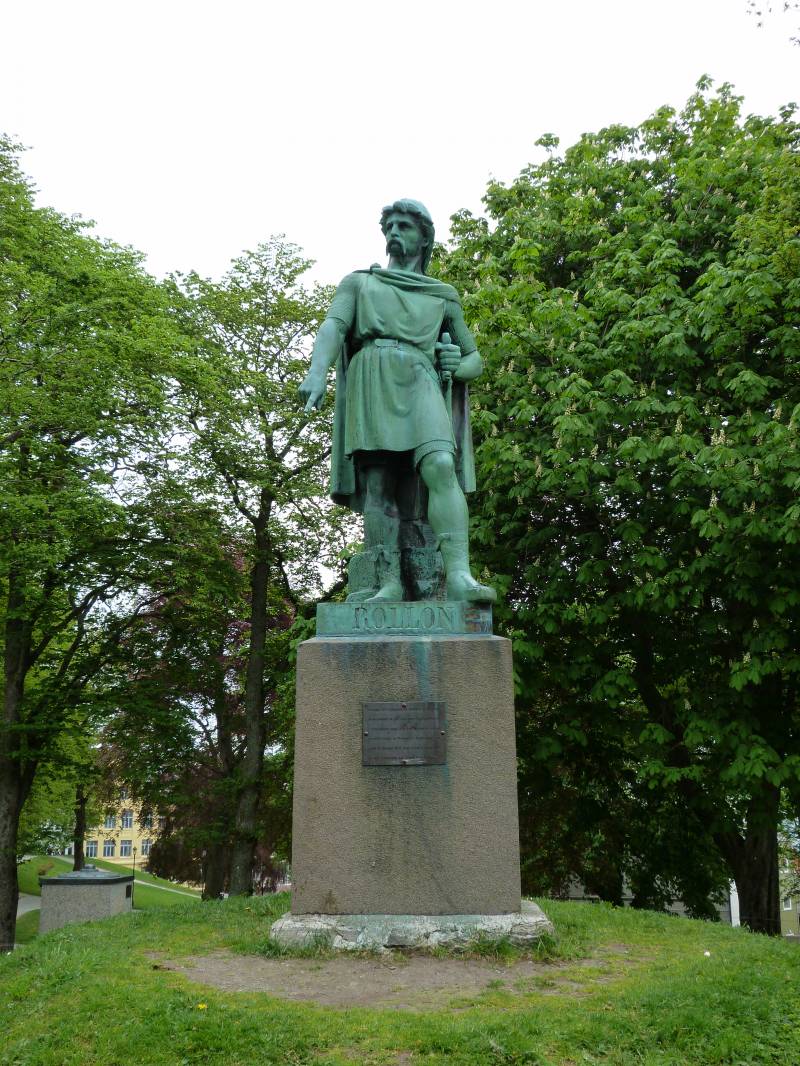
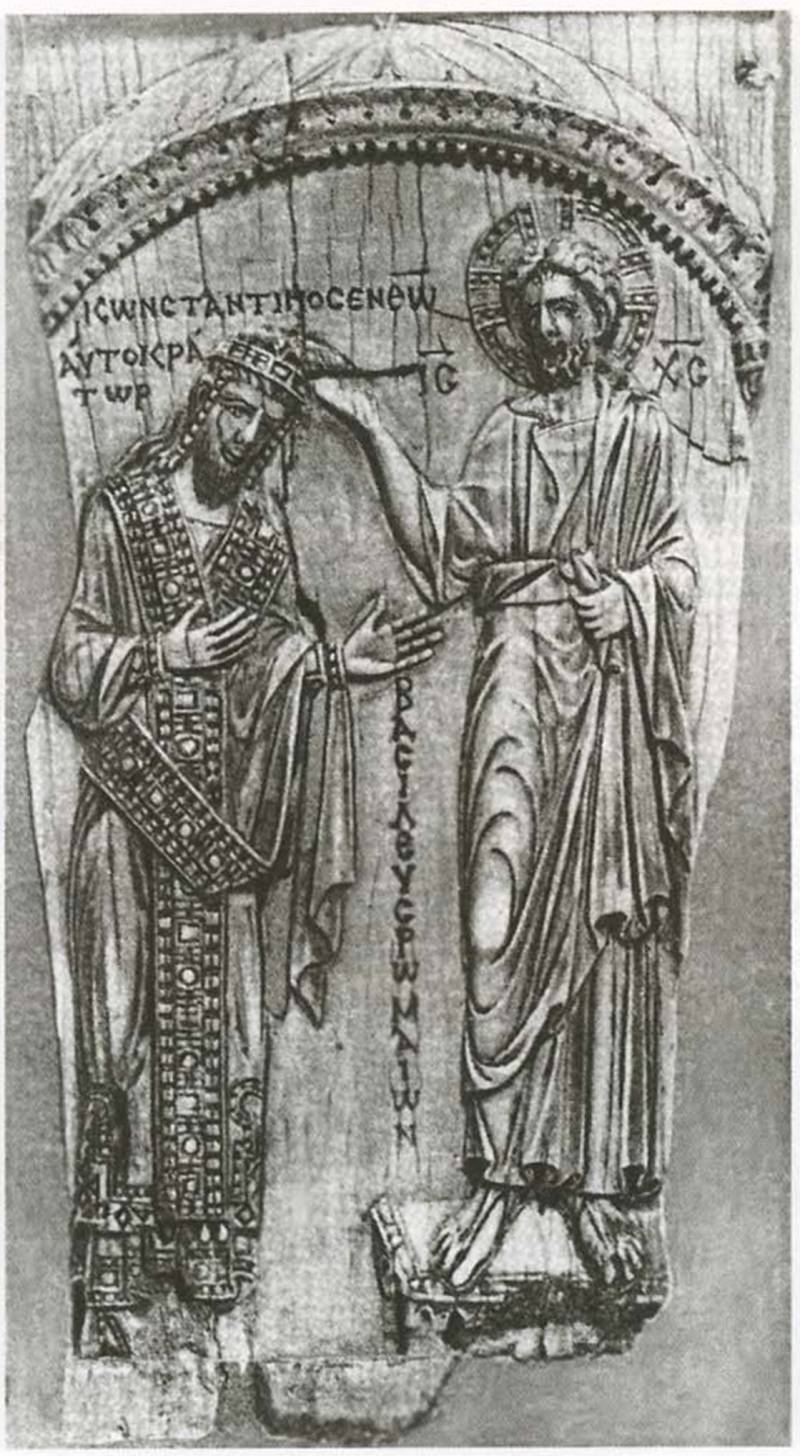
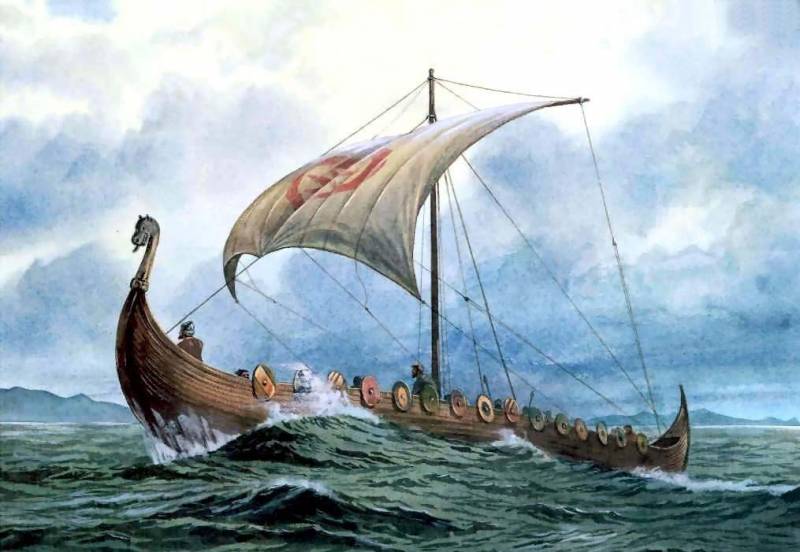
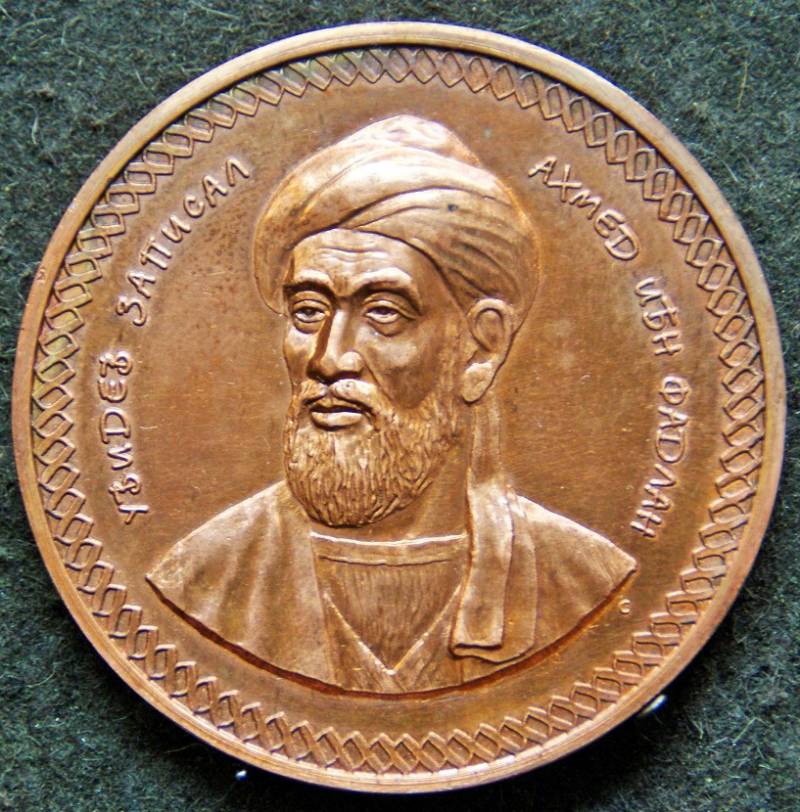
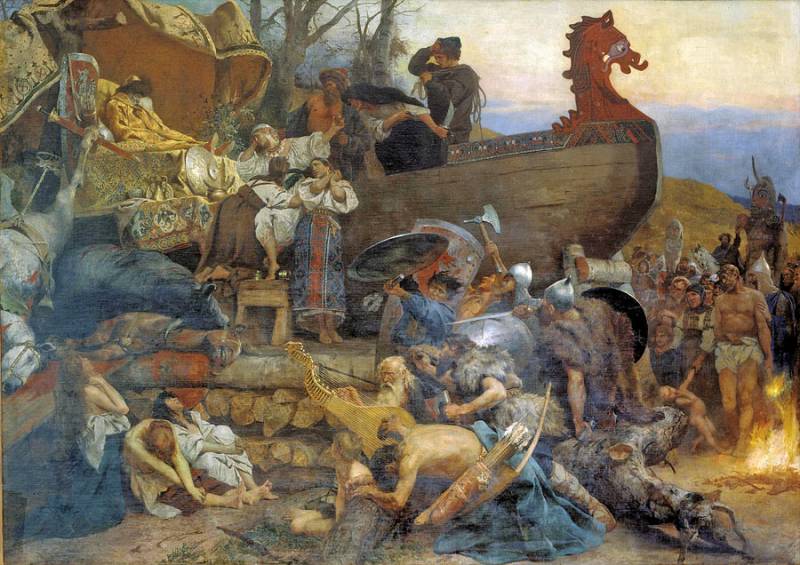
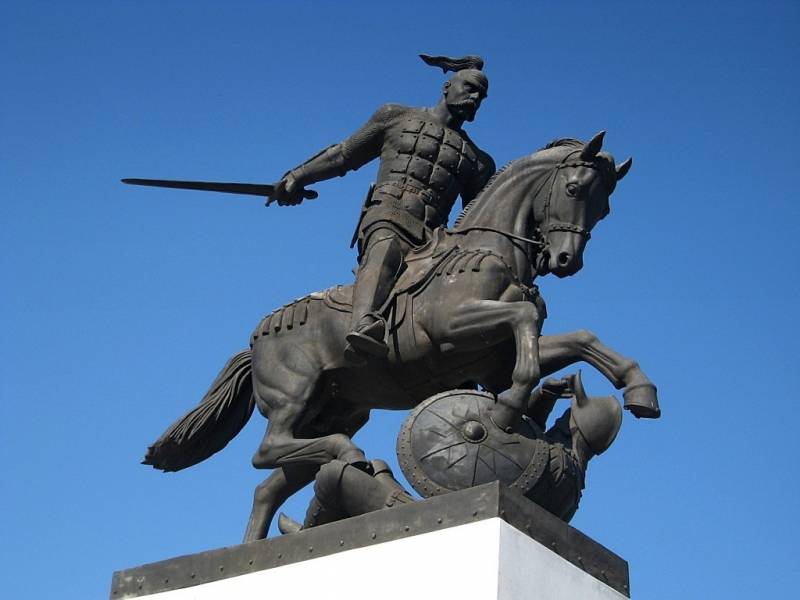
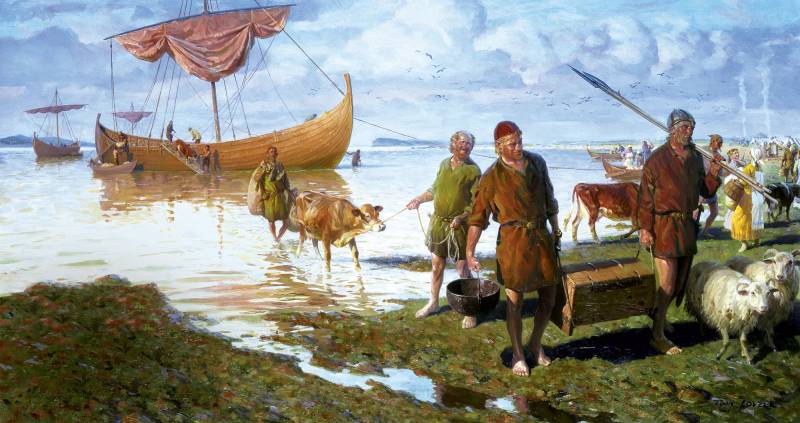
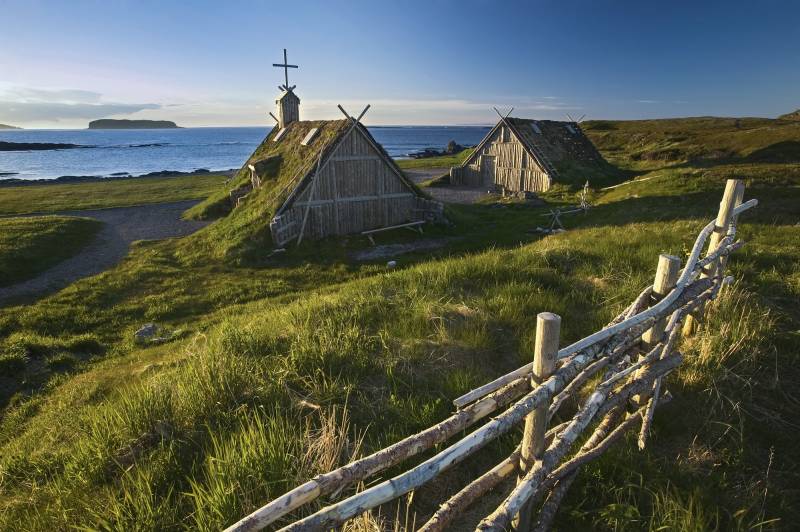
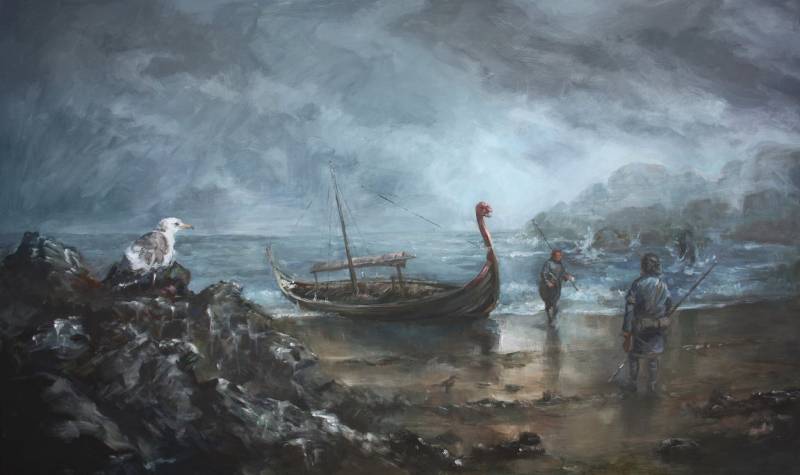
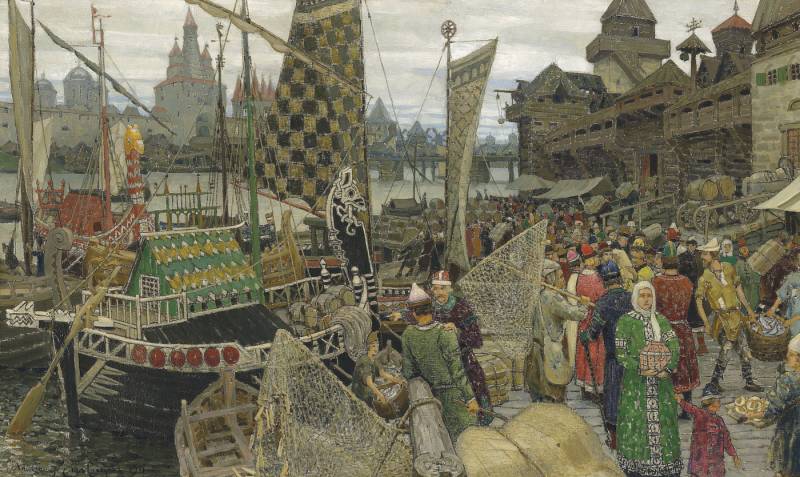
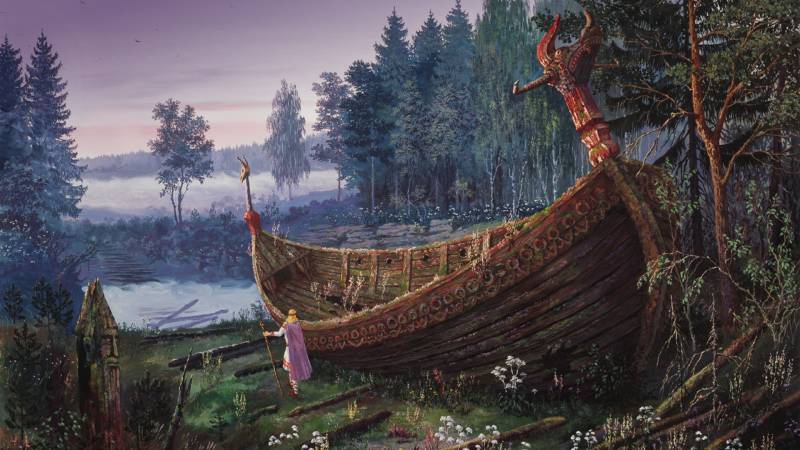
Information